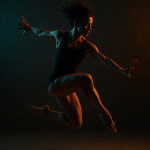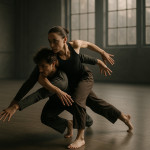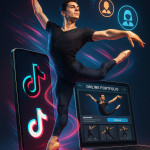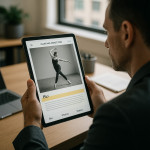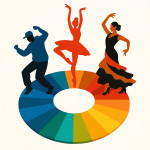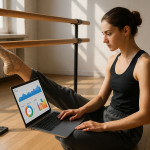Photo shoot essentials: lighting and poses that showcase versatility in one glance
Nail these lighting setups and pose dynamics to create a single photo that sells your full range—perfect for talent directories, casting briefs or an updated portfolio.
Why “one-glance” versatility matters
Scroll-heavy recruiters spend under five seconds on each profile. A shot demonstrating multiple moods, textures and energy levels instantly lifts engagement, cuts booking doubts and drives clicks to deeper galleries like the new dancer portfolios page.
The photo shoot essentials tripod: light, pose, intention
- Light: Shapes face and body, sculpts emotions.
- Pose: Communicates narrative, reveals physical control.
- Intention: Aligns both elements with the brand or casting goal.
Core lighting setups that scream range

Imagine stepping into a mid-size rental studio: a neutral grey backdrop spanning three meters, overhead pantograph grid carrying two strip boxes, a 90 cm octabox glowing camera left, and white foam boards taped at forty-five degrees on the floor. With this core configuration, moving the strip boxes five centimetres or sliding the boom arm slightly forward reshapes shadows, while rotating the subject's torso instantly toggles from beauty smoothness to razor-edged profile drama. These micro-adjustments cost mere seconds yet unlock radically different aesthetics—think sleek cosmetics commercial, intense film-noir poster and natural lifestyle catalogue—without rebuilding the set. Such flexibility is the backbone of the four lighting patterns below; master them and you'll stretch one budget, one crew call-sheet and one location booking into a portfolio that looks as if it travelled across three continents and five ad campaigns.
1. Clover Key
A four-point modified clamshell adds rim kickers on both sides. By pivoting your torso, you switch from beauty glow to edgy contours without moving stands.
2. Soft Edge Rembrandt
Use a 45° key plus a large reflector opposite. Small head turns produce classic Rembrandt triangles or full-face fill—two looks in seconds.
3. Split-to-Loop Hybrid
Mount a strip box on a boom. Slide it 15 cm across the nose line to morph split into loop lighting. Perfect for contrasting “mysterious” and “approachable” expressions.
4. Window-plus-reflector
Natural light through sheer curtains yields diffused commercial brightness. Flip the reflector's silver side for high-contrast drama.
For deeper lighting strategies, explore the lighting setups that flatter every skin tone guide.
Pose families that broadcast adaptability
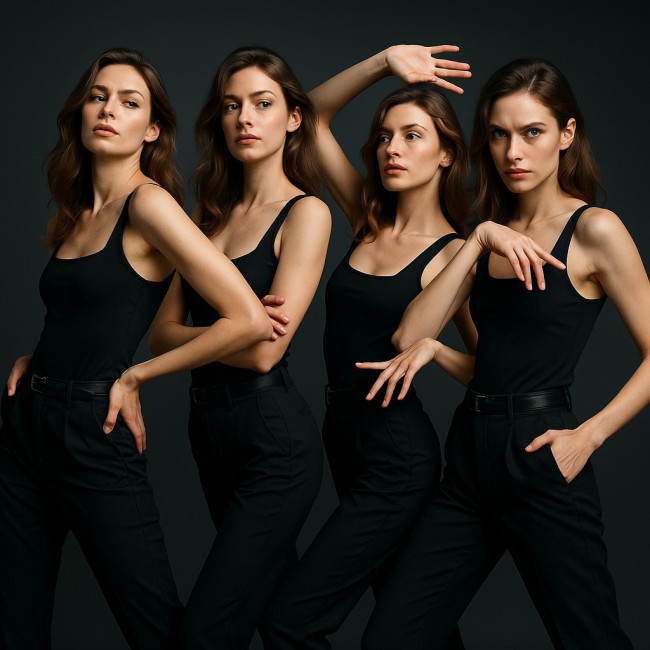
Versatility is not only about technical lighting; it lives in the bloodstream of your body language. Picture a sequence where the model shifts from a CEO-worthy power spine to a languid S-curve, then snaps into deliberate angular limbs that scream high-fashion edge—all before the strobe finishes recycling. Each pivot, no matter how slight, rewrites the character arc: shoulders anchored and chin raised communicate authority; a relaxed ribcage and dropped hip whisper lifestyle ease; exaggerated elbow bends carve kinetic tension suited to dystopian editorials. Glue these macro moves with micro-expressions—subtle eyebrow lifts, half smiles that threaten to bloom, a thoughtful gaze drifting off set—and the resulting contact sheet will read like a storyboard for five different campaigns. Importantly, you achieve this buffet of moods while standing on the same gaffer-taped X, meaning art directors grasp your full acting bandwidth in a single glance, reducing their risk and boosting your casting odds.
Power spine vs. fluid spine
Alternate between a straight, grounded posture and an S-curve. The switch modifies perceived character—from corporate to lifestyle—in one frame burst.
Angular limbs
Bent elbows and knees create tension, suitable for editorial grit. Relax joints to soften the message instantly.
Eye-line play
Keep chin position steady but dart eyes off-camera for candid vibe, then stare down the lens for confidence. Only pupils move, yet mood flips.
Micro-expressions
Practice a catalogue of five subtle expressions: half-smile, eyebrow pop, compressed lips, soft jaw, and “breathe-through-mouth” ease.
Need more framing ideas? Reference the camera angle tactics article.
Blending light and pose: a rapid-fire workflow
- Lock your base setup (e.g., Clover Key).
- Run a pose ladder: power spine → fluid spine → angular limbs.
- While firing, flag or unflag the fill for instant contrast change.
- Repeat with reflector flips. You now have six distinct looks in under two minutes.
Planning your one-look versatile shoot
| Step | Time allocation | Key deliverable |
|---|---|---|
| Concept deck | 15 min | Reference pose & lighting grid |
| Gear prep | 30 min | Charged batteries, synchronised triggers |
| Lighting test | 10 min | Histogram-balanced base shot |
| Main series | 20 min | 12-shot versatility set |
| Review & refine | 10 min | Star-rated shortlist |
Essential kit checklist
- Key modifier: 90 cm octabox or 70 cm beauty dish.
- Fill: 5-in-1 reflector (white & silver).
- Accent lights: two 30 × 120 cm strip boxes with grids.
- Heavy-duty boom arm for overhead shifts.
- Remote trigger with group control.
- Marking tape for repeatable subject placement.
Biggest mistakes and quick fixes
- Flat lighting + neutral pose = bland. Introduce either contrast or body angle.
- Over-directing expressions. Give verbs (“consider”, “challenge”) instead of facial instructions.
- Neglecting wardrobe texture. Shiny fabrics kill soft light depth; switch to matte layers.
- No tethered preview. Use a tablet to spot glare or hunched shoulders early.
Level-up resources
Feed your brain between shoots with lighting-focused podcasts and practice visual narratives following these visual storytelling tweaks.
FAQ
- How many versatile shots should I show in a portfolio?
- Three to five images are enough. Recruiters value quality over bulk and prefer fast-loading galleries.
- Can one lighting setup really cover commercial and cinematic looks?
- Yes—use modifiers that can switch from diffused to directional (e.g., move a softbox further back to harden edges).
- What if I have limited space?
- Shoot diagonally across the room, place lights higher to avoid background spill, and use collapsible backdrops.
Test your knowledge
Next step: put theory into action
Block 30 minutes this week to trial one lighting setup and two pose shifts. Share the strongest frame on your profile before Friday—momentum trumps perfection.
Ready to elevate every brief? Bookmark this guide, test relentlessly and watch your enquiries rise.
